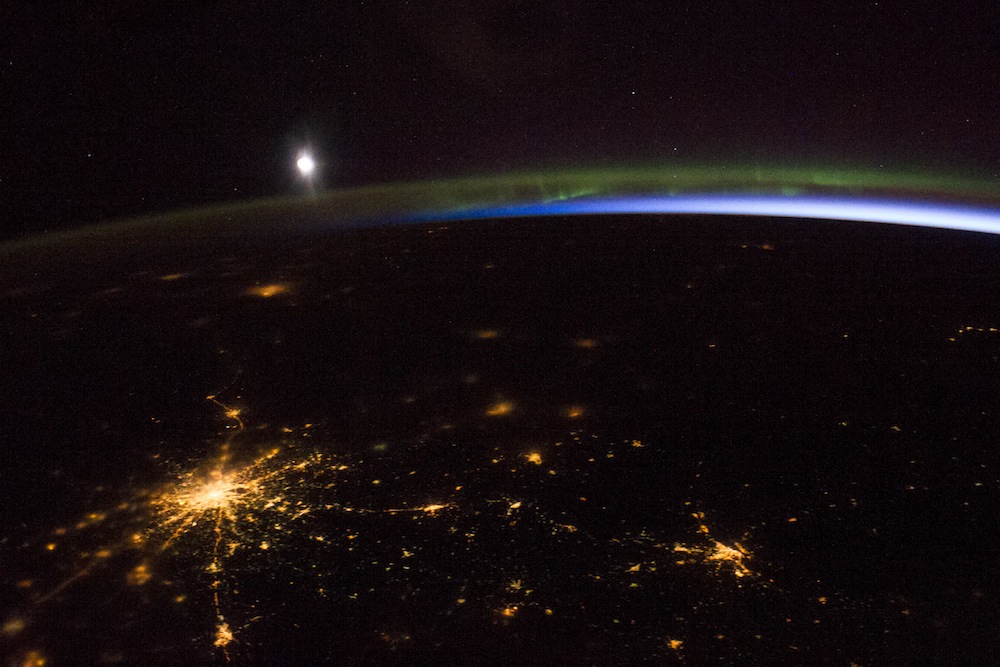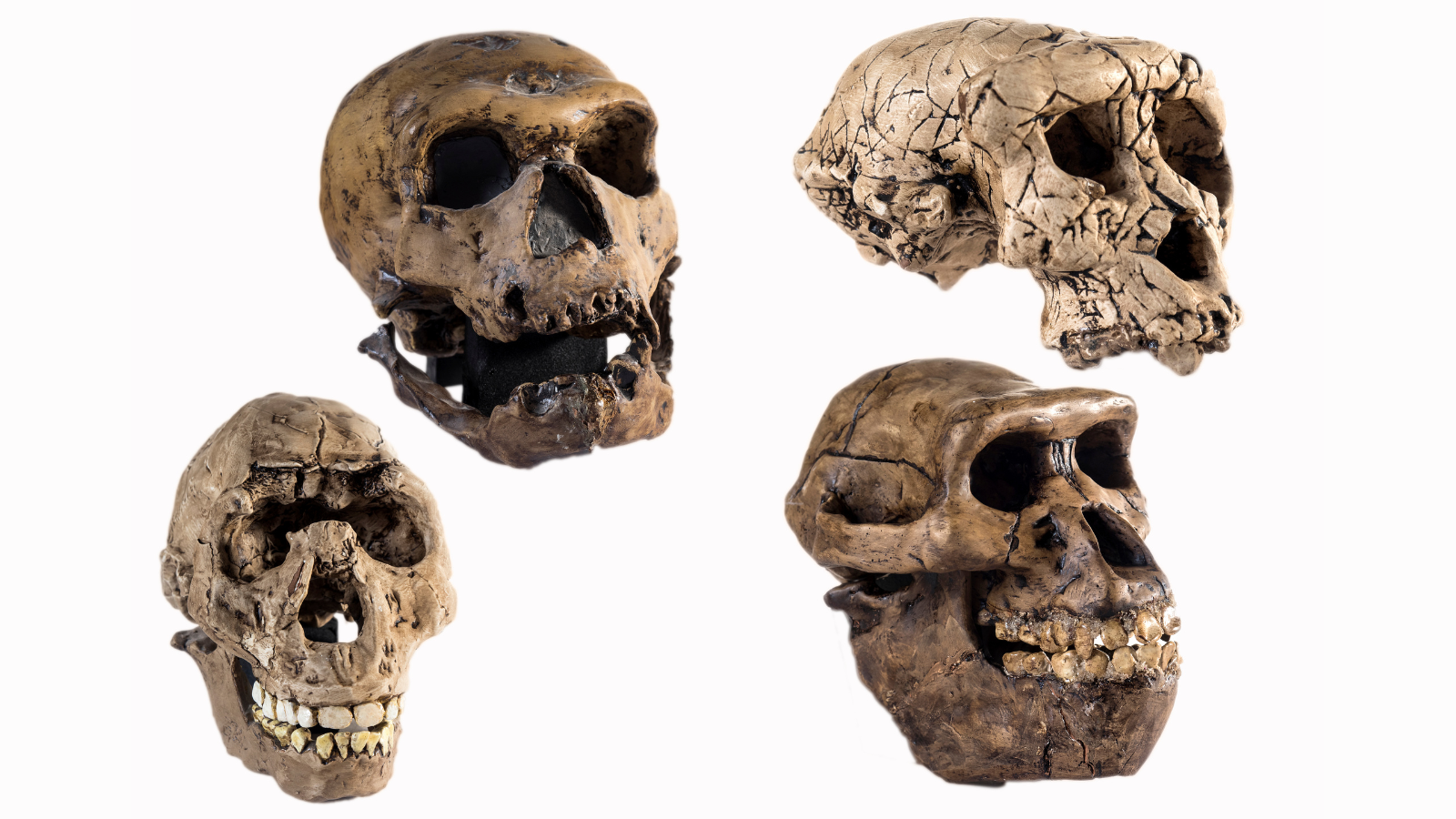Quartet of Lights Makes Russia Glow in New Space Photo

Both man-made and natural lights provide a show for astronauts in a recent photograph of Russia from orbit.
Taken April 2, this photograph shows Moscow at night, its radial streets making a sunburst pattern against the surrounding countryside. Toward the horizon, a blue line of airglow marks Earth's atmosphere. Airglow is weak light given off by the atmosphere, mostly created through the interactions of atoms and ions. This glow is frequently visible from the International Space Station, from which this photography was taken. (The image was released today (June 23) by NASA's Earth Observatory.)
Above the airglow, the aurora borealis paints the sky green. Also known as the northern lights, the aurora is caused by charged solar particles hitting the upper atmosphere. Earth is surrounded by a magnetic field that mostly deflects the constant flow of particles, known as solar wind, from the sun. The few particles that make it through this protective shield, however, excite oxygen and nitrogen molecules in the atmosphere. As the excited molecules settle back down, they emit photons, or light energy. It is these photons that create the dazzling green (and sometimes red, purple, pink and white) aurora lights.
The final light over Russia is the moon, visible as a white blur just above the green edge of the aurora. Back on Earth, scattered yellow lights mark other cities: Nizhny Novgorod is to the right of Moscow, about 249 miles (400 kilometers) away. St. Petersburg is a faint blur directly in line between Moscow and the moon, and Helsinki in Finland appears as a smudge farther out and left of St. Petersburg.
Editor's Note: If you have an amazing weather or general science photo you'd like to share for a possible story or image gallery, please contact managing editor Jeanna Bryner at LSphotos@livescience.com.
Follow Stephanie Pappas on Twitter and Google+. Follow us @livescience, Facebook & Google+. Original article on Live Science.
Get the world’s most fascinating discoveries delivered straight to your inbox.

Stephanie Pappas is a contributing writer for Live Science, covering topics ranging from geoscience to archaeology to the human brain and behavior. She was previously a senior writer for Live Science but is now a freelancer based in Denver, Colorado, and regularly contributes to Scientific American and The Monitor, the monthly magazine of the American Psychological Association. Stephanie received a bachelor's degree in psychology from the University of South Carolina and a graduate certificate in science communication from the University of California, Santa Cruz.


